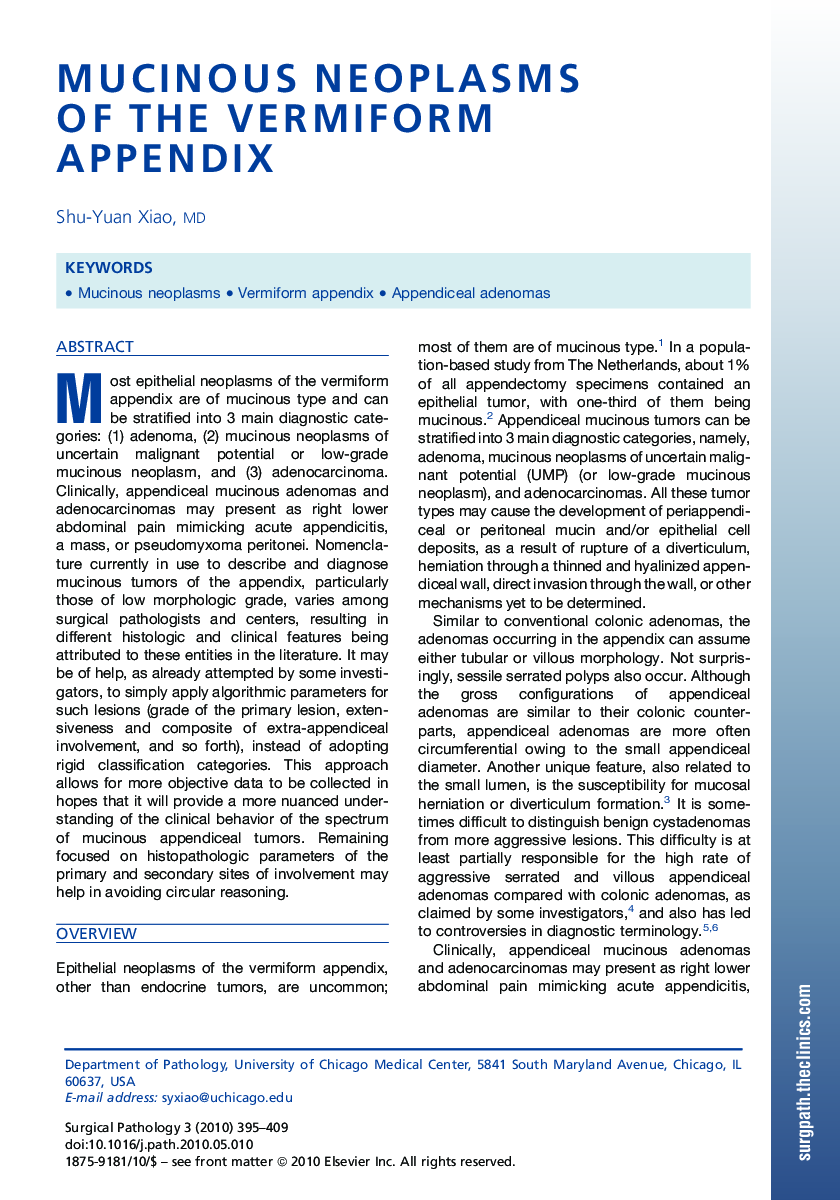| Article ID | Journal | Published Year | Pages | File Type |
|---|---|---|---|---|
| 3334776 | Surgical Pathology Clinics | 2010 | 15 Pages |
Abstract
Most epithelial neoplasms of the vermiform appendix are of mucinous type and can be stratified into 3 main diagnostic categories: (1) adenoma, (2) mucinous neoplasms of uncertain malignant potential or low-grade mucinous neoplasm, and (3) adenocarcinoma. Clinically, appendiceal mucinous adenomas and adenocarcinomas may present as right lower abdominal pain mimicking acute appendicitis, a mass, or pseudomyxoma peritonei. Nomenclature currently in use to describe and diagnose mucinous tumors of the appendix, particularly those of low morphologic grade, varies among surgical pathologists and centers, resulting in different histologic and clinical features being attributed to these entities in the literature. It may be of help, as already attempted by some investigators, to simply apply algorithmic parameters for such lesions (grade of the primary lesion, extensiveness and composite of extra-appendiceal involvement, and so forth), instead of adopting rigid classification categories. This approach allows for more objective data to be collected in hopes that it will provide a more nuanced understanding of the clinical behavior of the spectrum of mucinous appendiceal tumors. Remaining focused on histopathologic parameters of the primary and secondary sites of involvement may help in avoiding circular reasoning.
Keywords
Related Topics
Health Sciences
Medicine and Dentistry
Hematology
Authors
Shu-Yuan MD,
